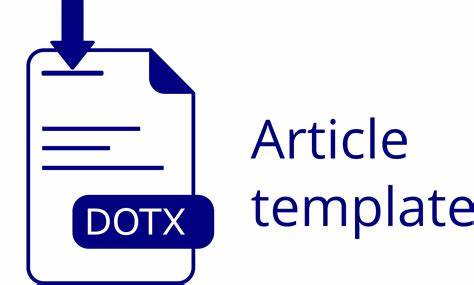STUDI ATAS BERBAGAI MACAM METODE MEMBACA ALQUR’AN SEJAK TAHUN 50-AN SAMPAI SEKARANG
DOI:
https://doi.org/10.18592/al-hiwar.v5i9.1881Keywords:
method, learning, reading, al-qur'an, bagdadiyah, iqra ', al-banjary, albarqy, tilawatyAbstract
This paper wants to describe the methods used by the teachers of the Qur'an in teaching the reading of Al-Qur'an in Indonesia, including South Kalimantan. The Qur'an is the revelation of Allah SWT sent down to the Prophet Muhammad, to be a guide of human life. In the history since the time of revelation until now, the Qur'an is always read, studied and memorized by Muslims every day, this fact proves the achievement of the purpose of naming the Qur'an (mashdar form of the word qara'a which means "reading") . The naming of the Qur'an shows that this holy book has always been preserved in the form of recitation and recitation by the qurra 'wal huffazh since the time of the Prophet until now, even in this modern age the Qur'an is increasingly preserved in the form of cassettes, CDs, etc.In accordance with the development of this modern era, then the ways of studying the Qur'an is also more advanced as well, including ways to learn to read it. If in the time of the Prophet and the companions in reading and writing the Qur'an did not experience significant difficulties, because the Qur'an is derived in Arabic itself, but after Islam developed into various corners of the world that most do not use Arabic, start the scholars of the Qur'an think of how to make Muslims who are not good at Arabic can read the Qur'an properly and correctly. Appears Imam As-Suyuthi created a method of studying the Qur'an reading under the name "Qaidah Bagdadiyah" which for hundreds of years was used by Muslims to learn to read the Qur'an. In Indonesia, around the year 1985-an emerging ustadz H. As'ad Humam of Jogyakarta created a new method called "Iqra" with 6 Volume. This method is considered easier and faster for kindergarten and elementary children in learning to read Al-Qur'an that is managed by the school system / formal. After this Iqra method, then emerged various other methods in learning to read Al-Qur'an which is the development of Iqra 'method, such as in Kalsel own Team LPTQ Prov. South Kalimantan created the "AlBanjary" method of the 1995s for elementary and junior high school ages. Then from North Sulawesi emerged ustadz Muhajir Sulton with the method "Al-Barqy" in 1997's for the adults / parents. Furthermore, more recently discovered methods that are considered faster and easier than Iqra 'method for children of kindergarten and elementary school, the method of "Tilawati".One of the causes of a long time mastering the way of reading the Qur'an is the method of learning to read by spelling or tahajji like "alif fathah a, alif kasrah i" etc. so it takes a long time a learner to master the rules of how to combine letters to find a sentence, this method also applies in some Arabian peninsula. But in essence all of them have been instrumental in creating methods (ways) in the effort to learn to read the Qur'an for Muslims, each method must have advantages and disadvantages, then this paper would like to describe the various methods in learning to read Al-Qur ' which is considered popular among Muslim communities and their respective advantages and disadvantages.References
JQH-NU, Qaidah Bagdadiyah, (Jakarta: Pustaka al-Husna), 2011.
Khadijah, Perkembangan Seni Baca Al-Qur’an Dan Qiroat Tujuh Di Indonesia (Jakarta: Pustaka Alhusna), 1983.
Muhajir Sulthon, H. Metode AlBarqy, (Surabaya: Citra Pelajar), 1987.
Munawwar, al-, Said Agil Husien, al-Qur'an Membangun Tradisi Kesalehan Hakiki, ed. Abdul Halim, (Jakarta: Ciputat Press), 2002.
Sadiq Qamhawi, Muhammad, alBurhân fi Tajwid al-Qur’an wa Risalah fî Fadail al-Qur'an, (Kuwait: Dar al-Qur'an alKarim), 1392 H.
Subhi al-Saleh, Mabahits fî ‘Ulum al-Qur’an, (Beirut: Dar al-‘Ilmi li al-Malayin), 1977.
Suyuthi, Jalâluddin, al-, al-Itqan fî ‘Ulum al-Qur`an, Cet. II, Jilid I, (Mesir: Dar al-Salam, 1999 M/1420 H.
Syu'bân Muhammad Ismâ'il, Ma’a al-Qur`ân al-Karîm, t.tp: t.np., t.th.
Tim LPTQ Prov. Kalsel, Metode AlBanjary, (Surabaya: PT. Bina Ilmu), 1995.
'Utsmân, Syekh, al-'Allâmah, Haqqu al-Tilâwah Kitâbun Manhajiyyun Tatbiqiy Lita'allumi Tajwidi alQur'an Wa Ta'limihi 'Ala Riwayati Hafsin 'an 'Âsim, t.tp. : al-Manaâr, 1410 H/1990 M.
Quraish Shihab, M., Membumikan al-Qur'an, (Bandung: Mizan), 1992.
Zarqâni, al-, Muhammad 'Abdul 'Azim, Manâhi al-‘Irfân fî ‘Ulûm al-Qur`ân, Cet. III, Mesir: Mus t -Bâbi al-Halabi, 1951 M.
_____, Manâhi al-'Irfân fî 'Ulûm alQur'ân, Jilid I, Terj. Drs. H.M.Qadirun Nur dan Ahmad Musyafiq, S.Ag. Jakarta: Gaya Media Pratama, 2002
Published
How to Cite
Issue
Section
License
Authors who publish with this journal agree to the following terms:
- Authors retain copyright and grant the journal right of first publication with the work simultaneously licensed under a Creative Commons Attribution License that allows others to share the work with an acknowledgement of the work's authorship and initial publication in this journal.
- Authors are able to enter into separate, additional contractual arrangements for the non-exclusive distribution of the journal's published version of the work (e.g., post it to an institutional repository or publish it in a book), with an acknowledgement of its initial publication in this journal.
- Authors are permitted and encouraged to post their work online (e.g., in institutional repositories or on their website) prior to and during the submission process, as it can lead to productive exchanges, as well as earlier and greater citation of published work.





